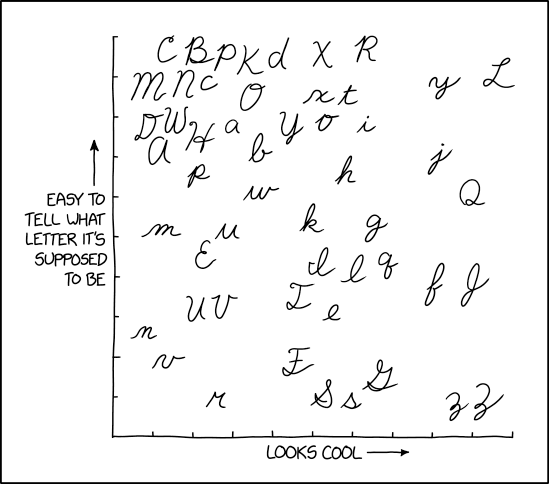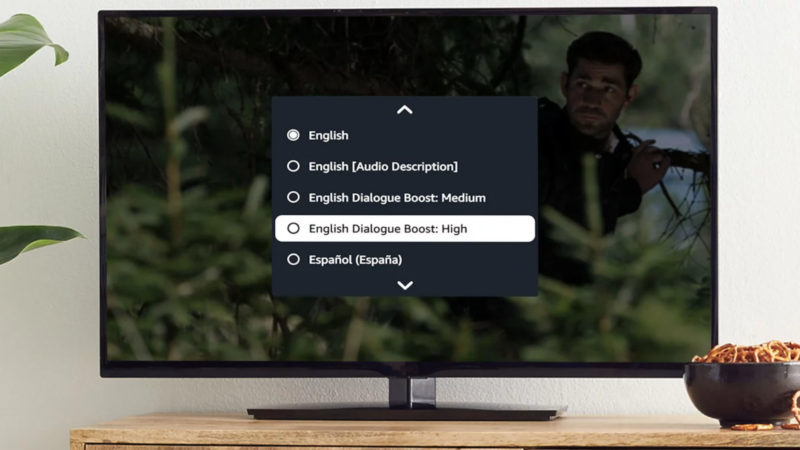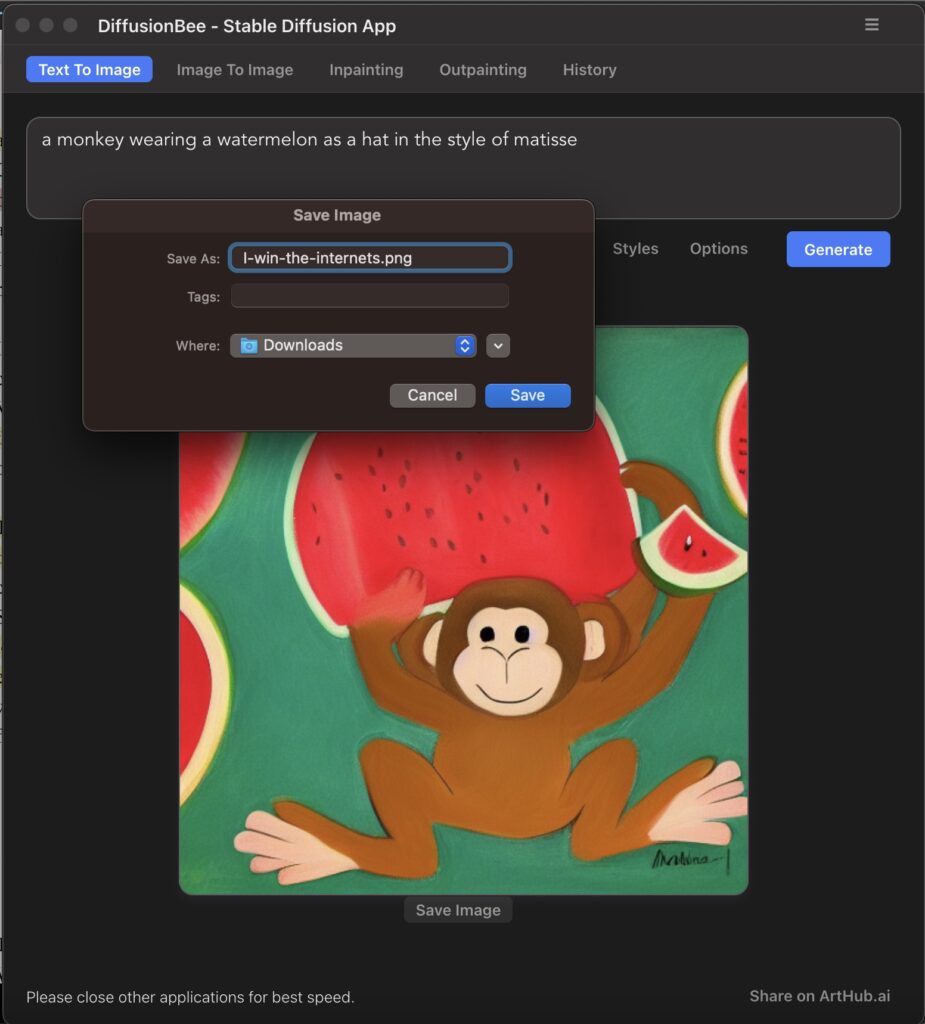
Download video: https://download.ted.com/products/176782.mp4?apikey=172BB350-0205

The Make staff went all out this year building their gingerbread houses.
The post The Make: Staff Gingerbread House Extravaganza appeared first on Make: DIY Projects and Ideas for Makers.
Ethical and compliance issues aside, the biggest problem I see with AI generated content or code is waste. Once again we use a new tool to generate more things quicker, rather than to generate fewer, better things. Even more interesting is that we could use this as an opportunity to analyse our ways and recognise cruft. In other words: if things are that formulaic that a machine can generate them, do we really need them?
A common joke is that people use ChatGPT to turn three bullet points into a well-formed email or cover letter and the recipient using it to turn that email back into three bullet points. It’s funny because it’s true. When I applied for jobs, I took the job descriptions and my CV data and asked ChatGPT to generate well-worded pieces for me. Quite a few companies I applied at use AI to screen incoming emails. I am also sure recruiters use AI to distill CVs and cover letters, given the amount of emails they have to deal with each day.
Application processes, CVs and cover letters have become formulaic to a degree where there are services to write your CV for you. It feels like hiring a lawyer or tax advisor, as the language necessary to get where you want to go is so far removed from day-to-day communication that it needs an expert. Do people read all that well-worded information though? I doubt it. Personally, I scan more than I read.
AI recommending us content doesn’t mean we have to take it all
Almost every application of AI sold as a way to make us more efficient means creating a lot of content automatically. I started typing this in Visual Studio Code with GitHub Copilot enabled. Copilot tries to be helpful by autocompleting my sentences and offering new paragraphs that complete the thought. Or so it thinks. What it did was annoy me with lots of unnecessary repetition of points made in the first paragraph. So I switched another editor – Hemingway, which keeps your writing terse and to the point.
I could have let Copilot go nuts and keep all its suggestions. It is tempting as it feels that you create a lot and you’re a more efficient writer. It is pretty common that people do that. The amount of generated content is overwhelming the current web. As the Verge put it, AI is killing the old web, and the new web struggles to be born. People generate a lot of articles, and moderators can’t keep up, so they also use AI to automatically detect AI generated content. It is the search engine optimisation arms race all over again, but this time it’s automated and it costs a lot of energy. Both human energy and electricity being wasted.
This is not only detrimental to the quality of the web as we’re drowning in mediocre, traffic-optimised content. It is also bad for the planet. AI functionality doesn’t come cheap. It is expensive in computation and means a lot of traffic going back and forth.
Trying to be green in an avalanche of generated content
We are currently looking how software can be greener and use up fewer resources and people like the Green Software Foundation do some amazing work in spreading awareness. And yet, the cost of AI consumption is not often questions as it is the cool thing of the moment.
Sure, with text this isn’t that much of an issue. Generated images, videos and upscaled low quality media means a lot of computation power and energy used for, well, what exactly? To prove that we can generated an image from a text saying “a monkey wearing a watermelon as a hat in the style of matisse”? Our few seconds of fame as a funny creator on social media without having to put any craft into it?
It’s pretty likely that this is another fad that will go away in the long run. Much like we stopped doing Simpsons avatars or Elfed ourselves. Younger audiences also consider GIFs as “cringe” which makes me happy as that was traffic and distractions nobody needed.
If AI generates code it can also optimise it
It is interesting though that the CEO of Twitter announced that soon Copilot and others will generate 80% of the code out there. The optimiser in me immediately saw this as an opportunity to cut the fat of our code bases. If 80% is generated boilerplate code, why should that always be created instead of re-used? During the course of my career one thing that annoyed me was that developers have no patience with platforms. Instead of taking part in open source and standardisation to make the platform do what we need, people kept writing their own solutions. Solutions often touted as a “stop-gap” solution that in the end, never go away. JavaScript libraries that made cross-browser development easier are now a dependency that can’t be removed any more. Even worse, they often aren’t even maintained, meaning they do not only become unnecessary traffic and code bloat, but also a security and performance issue.
I have to admit that in the last years I lost some interest in developing code. It’s not that there are no cool challenges or excellent new platform features. It is the way we approach development these days that bored me. We don’t solve problems, we don’t look for native solutions. Instead we include packages and components we don’t even know how they work or what they do. We build products from building blocks that other people wrote. It’s not a “let’s start a project by looking at the problem to solve”. It is “run this install to get the boilerplate code you might need”. When we release these products we find out they don’t perform. So we hire a performance expert to analyse our products and they find unused code and cruft. We then write more code to remove this unused code and create optimised code bundles for different use cases.
AI content generation feels the same. We generate a ton of content that isn’t ours and may be bad quality or a terrible idea and throw it out there. And then we use AI to cut it down to something that is understandable again. Seems wasteful, doesn’t it?
If 80% of the code of the future will be generated, this is a great opportunity to optimise that code. We won’t have to argue with engineers who want code to be done in a certain way. We can let machines generate code for machines. And then we have to ask ourselves why this code even exists. AI is great to detect patterns. So if hundreds of developers keep using the same code to solve an issue, couldn’t that code become part of the platform?
Let’s stop littering the web – it’s already full of rubbish
The web is in danger to be flooded with generated content that nobody needs. Our codebases are likely to get bigger because we get offered lots of code by hitting the tab key instead of writing it by hand. This is the time to be aware of this. Sure, convenience is a lovely thing. But we also need to think about the cost of what we create. For the ease of mind of other people, so we don’t overload them with content they will never read. And also what it means to the planet and our electricity consumption. AI is here to stay, and it can be used to optimise our workflows and our software products. But it can also help us to litter the web even more than it is right now.
Photo by Darwin Vegher on Unsplash

Enlarge / A promotional image of Dialogue Boost. (credit: Amazon)
Amazon has introduced a new feature to Prime Video called Dialogue Boost. It's intended to isolate dialogue and make it louder relative to other sounds in streaming videos on the service.
Amazon describes how it works in a blog post:
Dialogue Boost analyzes the original audio in a movie or series and intelligently identifies points where dialogue may be hard to hear above background music and effects. Then, speech patterns are isolated and audio is enhanced to make the dialogue clearer. This AI-based approach delivers a targeted enhancement to portions of spoken dialogue, instead of a general amplification at the center channel in a home theater system.
Not all content will be eligible for the dialogue boost feature, though—at least not yet. Amazon says it "has initially launched on select Amazon Originals worldwide" like The Marvelous Mrs. Maisel and The Big Sick.
While this is partly an accessibility feature for people who are hard of hearing, Amazon is also responding to a widespread complaint among viewers.
A 2022 survey found that 50 percent of 1,260 American viewers "watch content with subtitles most of the time," many of them citing "muddled audio" and saying that it's more difficult to understand dialogue in movies and TV shows than it used to be.
The dialogue problem
There's no one simple reason for this development. It involves several factors, but many of them could reasonably be categorized under a "fragmented viewer experience" banner.
Decades ago, most TVs or home theater speakers had similar audio capabilities. However, the range of devices used—from built-in speakers in cheap TVs and laptops to high-end Dolby Atmos surround-sound systems with AI-optimized sound fields and everything in between—has grown. Additionally, TV manufacturers introduce a wide variety of proprietary technologies and configurations that they can try to use to differentiate their products in marketing materials, changing the way the same content sounds on nearly every device.
All of that means that professionals who master and encode audio for distribution on streaming networks have their work cut out for them. Some shows prioritize making sure it sounds good for the highest-end setups, but the comparative lack of dynamic range in cheaper speakers can leave owners of lesser systems with muddled audio. But even if a (futile) effort is made to encode the audio for the widest viewership possible, the devices are still so fragmented that it may be impossible to ensure a quality experience for everyone.
There are other factors, too, of course. More theatrical styles of TV acting that were popular in the '70s, '80s, and '90s have given way to a subtler, more realistic delivery that was previously the realm of art films. While those deliveries played well in movie theaters with robust sound systems, they don't always work as well on $200 TVs. Streaming bitrates and related audio quality can also vary from household to household.
It's a similar set of underlying problems to TV shows appearing too dark for some viewers. Many of us remember the final-season Game of Thrones episode that had viewers squinting in vain to see what was happening. Film techniques playing on small screens with limited contrast, peak brightness, and dynamic range were all at play there—though HBO Go and HBO Now's then-subpar resolution and bitrate were a particularly big issue in that specific case.
Anyway, back to audio: Some streaming boxes or audio systems—like the Apple TV 4K or Sonos' home theater offerings—offer built-in dialogue-boosting features, but not everyone uses those devices. Amazon's new feature should, in theory, work on anything, even if it doesn't already have support for dialogue boosting.
The company hasn't announced when the feature will expand to more content. But we wouldn't be surprised to see rapid expansion—not just from Amazon, but from other streamers offering similar features, too.


